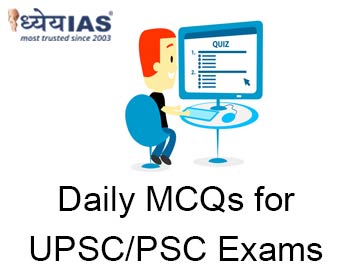Home > Daily-mcqs
Daily-mcqs 01 Feb 2025

Q1:
Consider the following statements with reference to the Payment and Settlement Systems (PSS) Act, 2007: 1. The Reserve Bank of India (RBI) is the central authority responsible for regulating and supervising payment systems in India under the PSS Act, 2007. 2. The Board for Regulation and Supervision of Payment and Settlement Systems (BPSS) is empowered by the RBI to supervise all payment systems in India. 3. The PSS Act provides the legal framework for netting and settlement finality in payment systems. How many of the above statements are correct?
A: Only 1
B: Only 2
C: All three
D: None
Answer: C
Explanation:
Q2:
Consider the following statements regarding the definition of "Payment System" under the PSS Act, 2007: 1. A "payment system" includes systems that enable payments between a payer and a beneficiary, covering clearing, payment, or settlement services. 2. Stock exchanges and clearing corporations set up under stock exchanges are included under the definition of "payment system". 3. Entities that operate payment systems are called "system providers," and they handle money transfer services, card-based payment systems. Which of the statements given above is/are correct?
A: Only 1
B: 2 and 3 only
C: Only 1 and 3
D: All of the above
Answer: C
Explanation:
Q3:
Consider the following statements regarding the procedure for appointing ad-hoc judges: 1. Under Article 127 of the Indian Constitution, the Chief Justice of India can appoint a High Court judge as an ad-hoc judge of the Supreme Court when the Supreme Court lacks quorum. 2. The appointment of an ad-hoc judge of a High Court requires consultation only with the Chief Justice of the concerned High Court. 3. The appointed ad-hoc judges in High Courts serve for a term of two to three years and focus primarily on clearing long-pending cases. Which of the statements given above is/are correct?
A: Only 1
B: 1 and 3 only
C: 2 and 3 only
D: All of the above
Answer: B
Explanation:
Q4:
Consider the following statements: 1. The Indian Constitution guarantees fundamental rights such as equality (Article 14), abolition of untouchability (Article 17), and the right to life (Article 21), to manual scavenger people. 2. The Prohibition of Employment as Manual Scavenger Act, 2013, focuses on the rehabilitation of manual scavengers but does not ban the practice itself. 3. The NAMASTE scheme encourages mechanized sanitation and aids in the rehabilitation of manual scavengers, providing an essential step toward eliminating the practice. Which of the statements given above is/are correct?
A: Only 1
B: 2 and 3 only
C: Only 1 and 3
D: All of the above
Answer: C
Explanation:
Q5:
What has been identified as a key driver of increased extreme rainfall events along India’s southwest coast in new study?
A: Increased moisture flux due to warmer sea surface temperatures in the southeast Arabian Sea.
B: The decline in sea surface temperatures in the southeast Arabian Sea.
C: Increased deforestation in the region.
D: A shift in monsoon winds from the northwest to the southwest.
Answer: A
Explanation:
The study highlights that the warming of sea surface temperatures (SSTs) in the southeast Arabian Sea has been a key driver for intensified moisture transport, which in turn has led to more extreme rainfall events along the southwest coast of India. Since 2014, SSTs in this region have exceeded 28°C, creating conditions favorable for increased moisture flux, contributing directly to the rise in extreme rainfall.